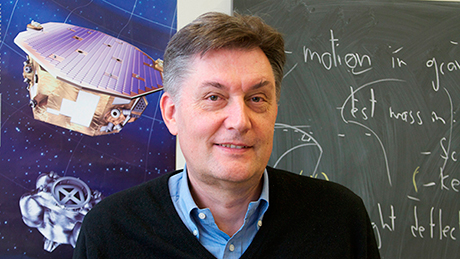Research into Gravitational Waves Gets a Boost

Professor Jetzer, what’s been your reaction to the news that gravitational waves have been detected?
Philippe Jetzer: I’m absolutely delighted that the LIGO team has managed to detect gravitational waves in an Earth-based experiment.
Doesn’t it bother you that LIGO has gotten there before your LISA experiment?
Jetzer: No, not at all. The two projects aren’t competing; instead, they complement each other. The aim is that someday LISA – Laser Interferometer Space Antenna – will be able to detect gravitational waves in space. We never assumed that LISA would be the first to detect the waves, since under the current plan the LISA satellites won’t be sent into space until 2034.
By contrast LIGO – or Advanced LIGO – was able to start measurements last year already. Since such great progress has been made in terms of the detectors, it was generally expected that they’d be able to detect the waves. It would have been more of a surprise or disappointment if LIGO had been unable to come up with proof of their. Then we’d have had to question fundamental assumptions of physics.
What are the implications of this evidence for the LISA project?
Jetzer: I hope the discovery will give LISA an extra boost. At the moment the LISA Pathfinder mission is running to test the technical feasibility of the LISA experiment, and things are at a delicate stage. This week important operations will be carried out, and afterwards it will be possible to do the first measurements relating to the function of the LISA experiment. If these measurements yield good results I could imagine, for example, that the United States would get on board the project as a partner. The extra funding could mean that LISA could be launched into space before 2034.
What contribution can LISA make to research into gravitational waves?
Jetzer: The LIGO experiment works with detectors with arms 4 kilometers long. With LISA, this distance will be a million kilometers. In other words, LISA will be able to measure and detect gravitational waves in a completely different frequency range than Earth-based experiments. The gravitational waves picked up by LIGO were emitted by the merger of two black holes around thirty solar masses large.
LISA will make it possible to also observe supermassive black holes several hundred solar masses in size. Supermassive black holes exist in the centers of galaxies. In the early phase of the development of the universe, galaxies were much closer together, which meant that collisions between supermassive black holes were much more frequent. LISA will enable us to detect the traces of such collisions, and gather information on the development of galaxies and the universe.